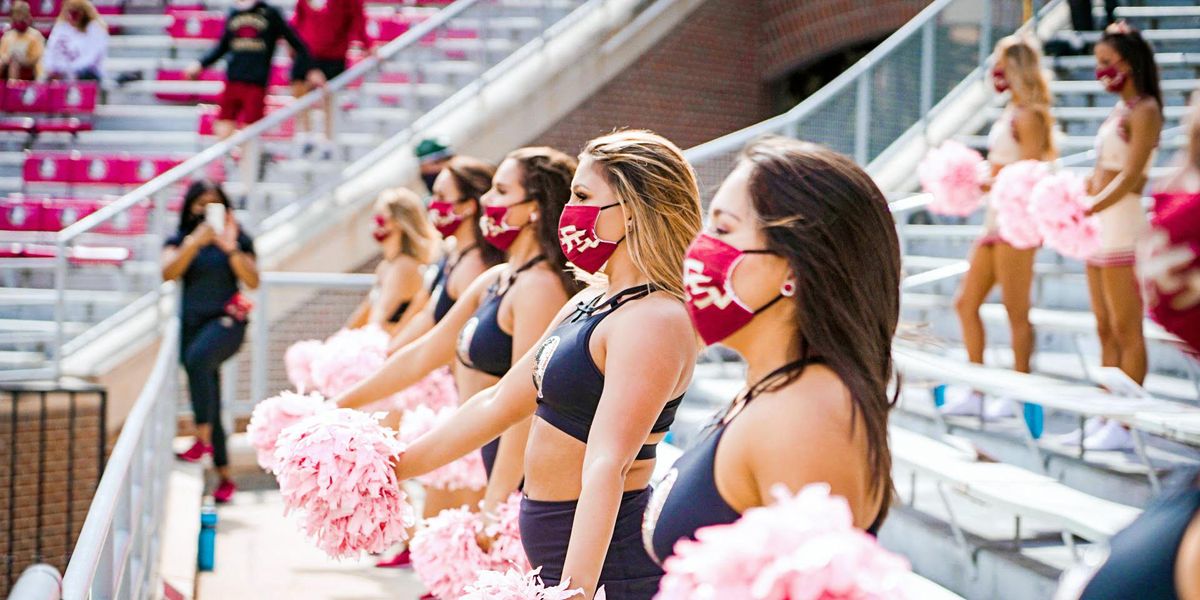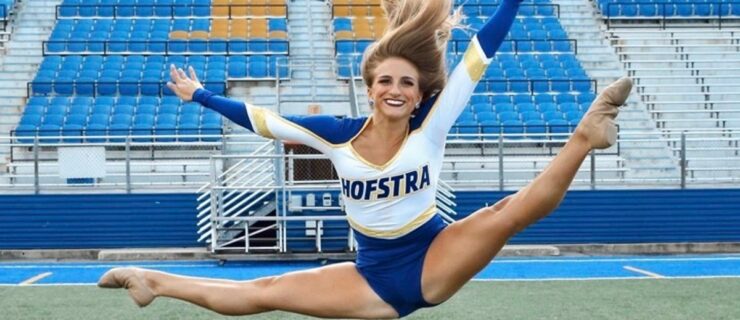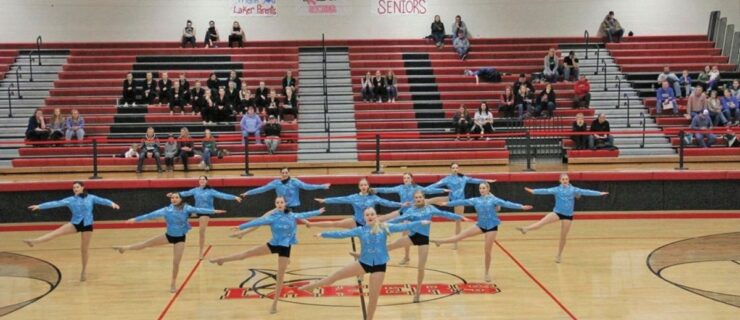Here's How 3 Top Collegiate Dance Teams Are Weathering the Pandemic
The dance team life is practically defined by togetherness: on the court, in the stadium, at team-bonding events and in rehearsal after rehearsal. So how are America’s collegiate dance teams even able to #SocialDisDance through this too-long pandemic? Dance Spirit asked members of three top teams to find out.
Abigail Kim, second-year member of Florida State University’s Golden Girls dance team
“COVID went through Tallahassee so quickly that almost everyone on our team has had it, myself included. Still, FSU wanted to make sure that all teams were setting the example in terms of following regulations.
We went on a tier system that divided the 24 of us into three groups of eight, based on seniority and experience. If two girls in Group One get COVID, two girls from Group Two are bumped up to Group One. That means we have to get cleared with a negative test, and already know the material so we’re ready to perform.
My group, Group One, was allowed to dance at the first football game. Typically, we dance down in the football field on the sidelines. For social distancing, we’re in the bleachers. We have five, maybe six inches within our little X that’s marked on the ground—so no kicking or turning. Even with masks, we obviously still perform with our faces. But audience members can’t see that in a football stadium.
There has been one silver lining. Before the pandemic, we had early-morning workouts twice a week, where we’d have to be at the gym or on the track by 5:30 or 6 am. Now that conditioning is on our own, we don’t have to wake up super-early!”
Riley Smith, co-captain of New York University’s dance team
“In September, we officially found out that the university was suspending varsity and club sports for the fall semester. It wasn’t completely surprising, and we all knew that it was in the interest of our safety.
Since then, we’ve been doing as much as we can over Zoom. We’ll share workouts and trade ideas for ways to stay active, but no formal practices are allowed. Even for those of us in NYC right now, there’s no practice space in apartments and dorms.
Our team ranges from eight to 14 dancers. Since three seniors graduated this spring and we haven’t been able to audition new members, it’s a much smaller group than usual. (We still have an interest form up on Instagram, and we’re encouraging people to join our email list so we can share what NYU is telling us and what we can expect, if anything, in the spring semester.)
The upside of sharing this tough experience as a smaller team is that we’ve gotten very close. You can see in competitions and performances when the team isn’t cohesive and doesn’t understand each other. I think this is really going to strengthen us for the future, whenever we do get to perform. And we’ve all had choreographic ideas that came out of more time to just play with movement.”
Erin Harold Alvarado, head coach of Texas Tech Pom Squad
“Since the beginning of the season, our mission has been to put our uniforms on as often as possible, since we don’t know if we might have to go virtual again. (Which we did for a few weeks earlier this semester, when a dancer unexpectedly tested positive.)
We’re lucky to be in West Texas, where we can do workouts and team-building outdoors. Our team is also lucky to have two studios, each taped in a grid of six-by-six squares. Between the two, we can fit almost our entire team. For some rehearsals, I stay in one studio with a mic pack on, and video and music are fed to the other studio. Other practices are in our Student Union Building’s ballroom, so the full team can practice at the same time in the same space.
We’ve gotten to do some game-day stuff, with part of the team performing or prerecording routines to be played at the game. Returning members have had a harder time adjusting to all the new rules than freshmen, maybe because the freshmen don’t know any different. But none of our dancers have chosen to stay home rather than come to campus and be part of the team—not even out-of-state students.
There are definite differences in how much dance teams are free to do right now, based on talking to colleagues at other schools. But I also feel there’s never been a stronger community. Even the fiercest competitors are helping each other through this.”




